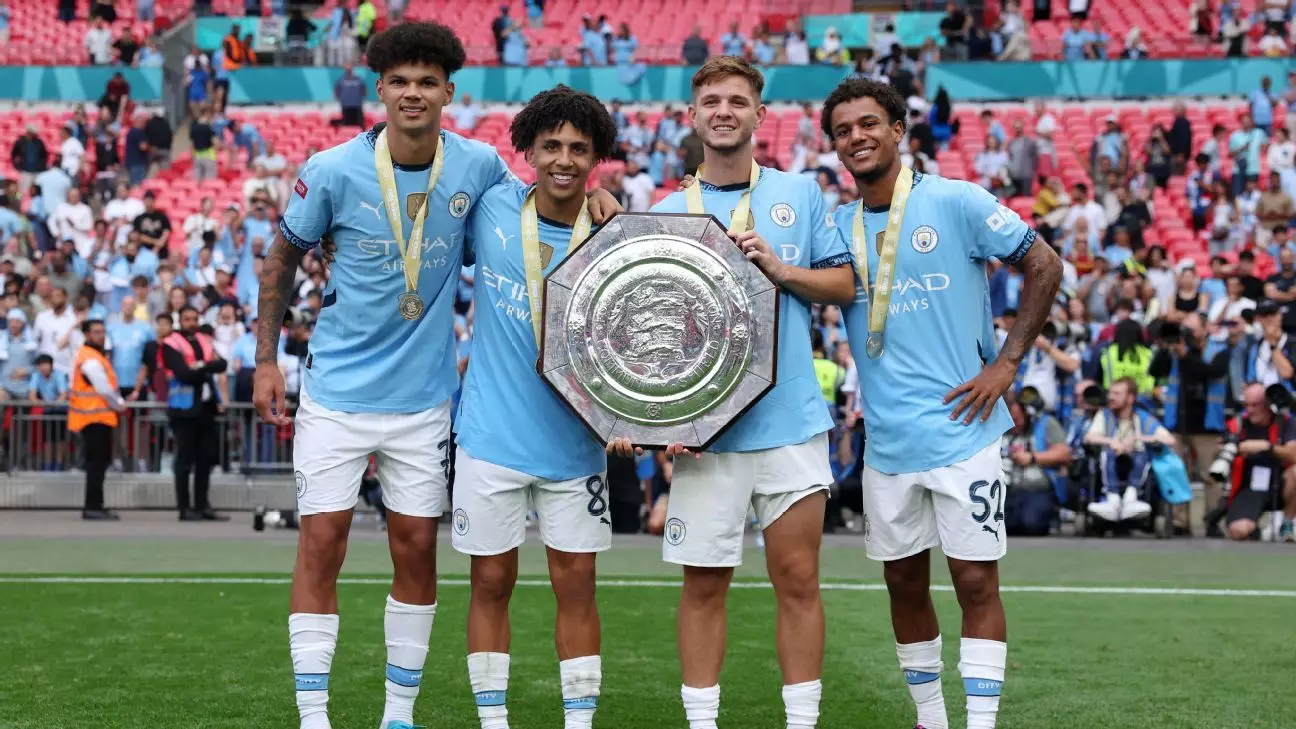In the wake of Manchester City’s monumental transformation following the Abu Dhabi takeover in 2008, the club’s youth academy has become a focal point of both admiration and aspiration. Previously grappling with a lack of resources and facilities, the academy has evolved into one of Europe’s leading talent production centers. Under the stewardship of figures like Thomas Krucken, the youth program not only aims to cultivate future professional players but also seeks to instill a competitive spirit and adaptability in a rapidly changing football landscape.
Krucken’s journey from coaching the foundation phase—responsible for ages 5-11—to becoming the current youth academy director showcases the progressive philosophy that defines City’s approach to nurturing talent. Reflecting on his early coaching days, Krucken recalls the humble beginnings that have paved the way for the illustrious academy we see today. From using improvised training aids to access state-of-the-art facilities at the City Football Academy (CFA), it is evident that City has invested heavily in creating an unparalleled environment for skill progression.
With the establishment of partnerships like the one with St. Bede’s College, which offers students a premier education, the academy is not solely about footballing skills. It’s about shaping well-rounded individuals equipped to tackle the challenges they’ll face both on and off the pitch. This holistic approach is fundamental, especially when you consider that the journey to the first team can be fraught with obstacles.
The goal remains clear: develop players who can seamlessly transition into the senior squad. Young talents like Phil Foden and Rico Lewis serve as the vanguard, proving that the academy can effectively build players who not only dream of, but are prepared for, professional football. The excitement surrounding academy graduates is palpable as they frequently grace the pitch under Pep Guardiola, highlighting the manager’s acute awareness of the talent blossoming within the club’s ranks.
One major advantage that young players at City benefit from is the alignment of their training with Guardiola’s tactical philosophies. By the time they progress to the first team, they possess an intrinsic understanding of the style of play expected at the elite level. This streamlined development enhancements the likelihood of their success. The ability of players like Kieran Trippier and Shaun Wright-Phillips to make impactful contributions as academy products demonstrates this alignment effectively.
Recent performances by academy graduates like James McAtee and Oscar Bobb underscore the changing landscape of City’s first team. These young players are stepping up in pivotal moments and challenging the status quo, showcasing that performance alone can open doors in the presence of hefty transfer fees spent on new recruits. Guardiola’s recent comments about retaining young players like McAtee further reinforce the club’s commitment to integrating youth into their tactical framework, allowing continuity and stability in a bustling squad.
However, the pressure to consistently perform at an elite level at City cannot be understated. The competitive atmosphere means that young talents must excel to secure their positions, often competing not only with each other but also with high-profile signings. For players like Bobb, who have faced setbacks such as injuries, perseverance remains key. The harsh realities of the transfer market and financial investments in new talent add layers of complexity to the path of exciting academy prospects.
This duality—upliftment through opportunity juxtaposed with the pressure of high aspirations—creates an environment that breeds resilience. For Krucken, the mission is clear: not every young player will don the City jersey at a senior level, but the academy must continue to produce players equipped to thrive at other clubs, thus ensuring financial sustainability and a legacy of nurturing talent.
Part of the academy’s strategy involves anticipating future trends in football. By predicting what skills and attributes will be paramount in ten years, Krucken and his team are preparing their players to be ahead of the curve. For instance, they recognize an inevitable increase in the pace of the game, which necessitates a focus on agility, speed, and decision-making. This forward-thinking approach illustrates that while the academy serves the current squad, it is also deeply invested in the evolution of the game itself.
The substantial sums generated from player sales—totaling about £276 million in the last five years—also highlight the success of the academy’s developmental processes. Each outgoing player represents not just a financial boon for the club but also speaks volumes about the academy’s ability to cultivate talent that attracts attention from other competitive environments.
Ultimately, Manchester City’s youth academy stands as a powerful testament to the club’s enduring commitment to excellence, not only on the pitch but in the broader context of player development. The journey from promising youth to potential superstars is riddled with challenges; however, the groundwork laid today will shape the future landscape of the team’s fortunes, echoing the importance of nurturing young talent within a transforming football ecosystem.

